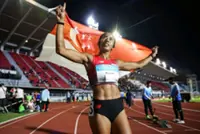Minister-in-charge of Trade Relations S. Iswaran (centre) touring the exhibition at the Global Space and Technology Convention. - SINGAPORE SPACE AND TECHNOLOGY LIMITED
SINGAPORE (The Straits Times/Asia News Network): As countries plan to send humans to the Moon again and on long missions to Mars, the National University of Singapore’s (NUS) medical school and a local space organisation want to find out how babies and families will be made in outer space.
Will pregnancy take longer in space? How will reproductive organs and the foetus respond to the harsh space environment and radiation?
Already a subscriber? Log in
Save 30% OFF The Star Digital Access
Cancel anytime. Ad-free. Unlimited access with perks.





